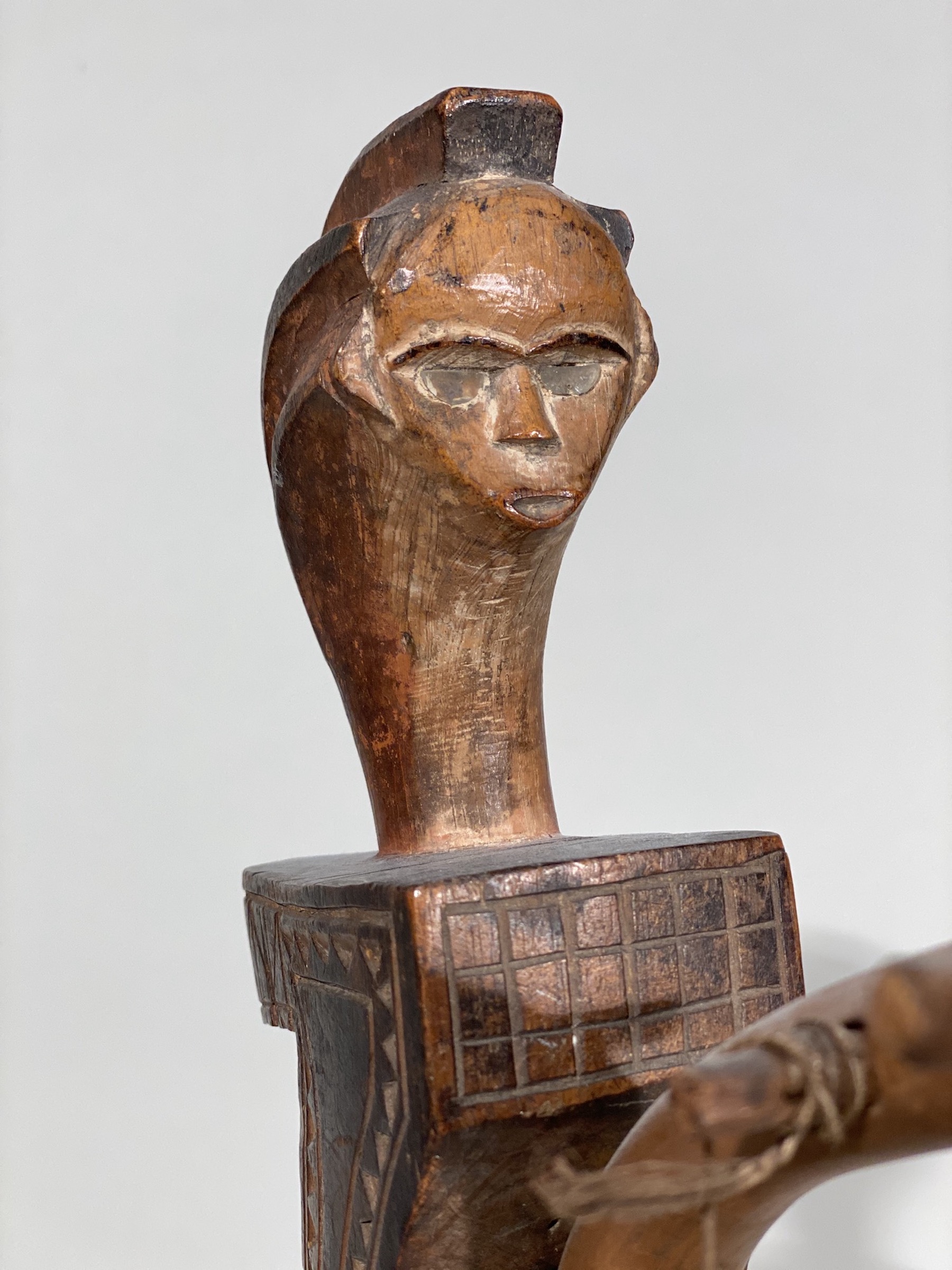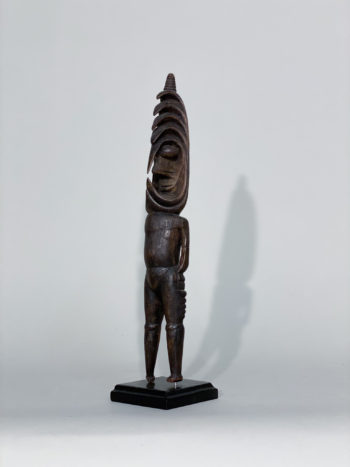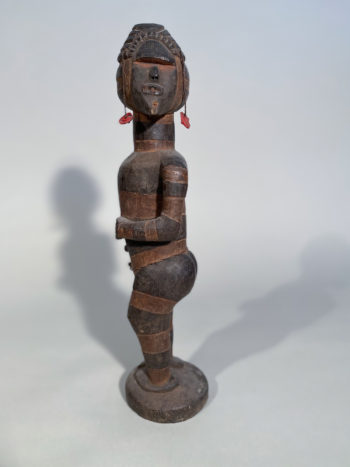An Artist’s Collection VOL.1
Ngombi, Gabon, Africa
Early 20th century
Hide/skin, wood, string
21″ x 16″ x 4″
ex Alain Lecomte, Paris, France
Additional photos available upon request
The harp, a female element, symbolizes the woman’s body and the mother-ancestor’s face. The first ancestor, Disumba («the mother») is represented by the sculpted head. During ceremonies, the harp’s voice teaches the initiates the true meaning of hermetic accounts. The instrument becomes performer and mediator. In the primeval myth, the «upper» and «lower» villages are connected by a cord: mungongo and ngombi symbolize this primeval link between the spiritual and human worlds, as well as the passage from nature to culture.The ngombi harp is considered sacred when integrated to the Bwiti ceremonies. There also exists a secular repertoire. The bwiti has its roots in Tsogho and Pindji ethnic groups traditions. Whatever the variation, the bwiti is based upon the cult of the ancestors and essentially presents itself as a sum of knowledge around the secret teachings about the theory of the World. During these ceremonies, music, dance, carved objects and scenography are essential elements in the understanding of the primeval myth.Two types of drums are used in bwiti ceremonies: the ngomo, whose membranes are laced, and the misumba, whose membrane is nailed.These drums accompany, amongst others, the dances of the Masks.










